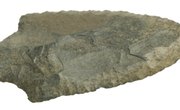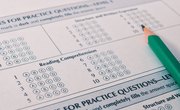Study guides are a framework for reviewing the information most likely to show up on your next exam and for mastering any subject you tackle. An effective study guide takes into consideration your learning style and keeps the information clear and organized.
Find Clues From Class
Instructors often give clues about the information that is most important. Pay attention to topics the professor emphasizes in class. If they're important enough to discuss in class, they are likely to show up on the exam. The class syllabus is another tool for identifying sections to include your study guide. Ask your instructor about upcoming exams to find out what types of questions will be included. Multiple choice and true/false questions require knowledge of specifics, such as dates or definitions. Essay-style questions require you to know broad ideas, themes and connections between ideas. Set up your study guide to reflect the knowledge you need to absorb based on the test style.
Review Study Materials
Your class notes, textbook and other study materials provide another resource for developing a study guide. The vocabulary words, ideas and key points in your notes can become points on the study guide. Review textbook features that fit into your study guide outline. The subheadings, charts, diagrams and questions at the end of the chapter help you identify essential information from the book.
Make an Outline
Those main points from your professor and your class materials become the framework for the study guide. Create an outline that focuses on the top sections you identified. Think about the main concept you're studying, and break it down into several sections or categories. When studying a specific war, your sections might include events leading up to the war, declaration of war, major conflicts and outcome. Go into more depth with subtopics under each main category. You can go into more detail under subtopics as necessary to include the most important information.
Customize the Guide
The outline provides a general study guide, but you can make it more useful by customizing it to suit your study style. Add main points under each section of the outline, or turn the information into questions to quiz yourself. If you prefer a visual study guide, turn the outline into a concept map. Put important phrases in circles. Draw branches from the circle with additional details related to the central concept. You can also draw arrows between concepts with details about how they relate. Another option is to add images, charts or graphs to illustrate the concepts in the study guide.
Related Articles
References
Writer Bio
Based in the Midwest, Shelley Frost has been writing parenting and education articles since 2007. Her experience comes from teaching, tutoring and managing educational after school programs. Frost worked in insurance and software testing before becoming a writer. She holds a Bachelor of Arts in elementary education with a reading endorsement.











